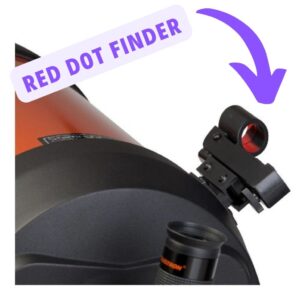This site contains affiliate links to products. I may receive a commission for purchases made through these links.
I’ve always been fascinated by the night sky, and if you’re like me, you might’ve considered investing in a Dobsonian telescope. But are Dobsonian telescopes good? Are they worth the investment? Let’s delve deeper into this.
Dobsonian telescopes, named after the amateur astronomer John Dobson, are renowned for their simplicity and functionality. They’re often praised for offering a lot of bang for your buck. But they’re not without their quirks.
In this article, we’ll explore the pros and cons of Dobsonian telescopes, helping you decide if they’re the right choice for your stargazing needs. Whether you’re a seasoned astronomer or just starting out, it’s essential to choose the right equipment. So stick with me as we journey through the cosmos of this fascinating topic.
The Background of Dobsonian Telescopes
When looking at the history of Dobsonian telescopes, one must consider the man behind these revolutionary stargazing tools. John Dobson, a monk and self-taught stargazing enthusiast, envisioned a simple yet effective telescope for every astronomy lover. He designed the Dobsonian telescope with an emphasis on simplicity, affordability, and functionality.
Dobson’s ingenious design features a simple, movable altazimuth mount (the vertical and horizontal movement axis of the telescope) and a large aperture reflector telescope tube. As a self-taught astronomer, Dobson understood the struggles of observing celestial objects with less than ideal equipment. This understanding led to his desire to create something accessible to everyone, resulting in the telescope that bears his name—the Dobsonian telescope.
The success of the Dobsonian design lies in its great light-gathering capabilities. It’s equipped with a large diameter mirror, which, of course, increases the light-capturing abilities. Dobsonians are typically seen as some of the best deep-sky objects observing machines due to their wide aperture.
What set Dobsonian telescopes apart when they first emerged, and what continues to make them a popular choice among astronomers today, is the straightforward design and ease of use. There’s no need to spend hours setting up complex mounts or learning complex star tracking systems. A Dobsonian telescope setup is straightforward—I move the telescope tube up or down, left or right to follow the movement of the stars.
This approach shifted the focus from complex engineering to appreciating the beauty of the night sky, making astronomy more democratic and less elitist. The background of Dobsonian telescopes is a story of innovation for the masses, a testament to John Dobson’s vision for a more accessible form of stargazing. Now continue reading for a deep dive into the advantages and challenges of these legendary telescopes.
Advantages of Dobsonian Telescopes
When it comes to understanding the merits of Dobsonian telescopes, several key advantages are worth noting. First up, it’s all about their exceptional light gathering capabilities. Thanks to their large aperture, Dobsonians let in more light and ‘brighten the night,’ so to speak. Star clusters, nebulae, and distant galaxies – all come within the sighting range of this type of telescope. A facet that amateur and beginner astronomers particularly appreciate.
Another notable advantage of Dobsonian telescopes is their uncomplicated design. In terms of assembly, simple is the best word to describe it. You don’t need a wealth of assembly knowledge or an arduous setup process to get them working. This feature makes Dobsonians a favorite among stargazers who prefer functionality without the fuss.
Quality doesn’t always have to come with a hefty price tag, which rings true for Dobsonian telescopes. They’re known to be among the most affordable telescopes available in the market. Yet they deliver an exceptional viewing experience, aligning quality and budget in perfect tandem.
| Advantage | Description |
|---|---|
| Exceptional light gathering | Brightens the night, a hit with amateur astronomers |
| Uncomplicated design | Hassle-free setup and easy to use |
| Budget-friendly | Aligns quality and cost |
Moreover, Dobsonian telescopes are renowned for their sturdiness. Their robust altazimuth mount keeps the set up grounded and stable, serving as the backbone of the telescope. This feature helps minimize shaking during observation, ensuring a smoother viewing experience.
Lastly, these telescapic gems are heralded for their portability. Many Dobsonians are designed to be broken down into smaller parts or even come with handles for easier transportation. So, relocating your stargazing location is made more convenient, whether it’s to the backyard, a planned campout, or even atop a mountain.
With these features in mind, it’s easy to see why Dobsonian telescopes have become a preferred choice for many stargazers, both beginners and veterans alike. But that’s not all. While we’ve touched on some of the key benefits, we’re yet to dive into the challenges they pose. But, that’s a discussion for another section.
Limitations of Dobsonian Telescopes
Despite their many advantages, it’s important to acknowledge that Dobsonian telescopes come with their own set of limitations. The first noticeable drawback is their size and weight. While their large aperture allows for impressive views of the cosmos, it does mean these telescopes tend to be larger and heavier than other types. This can sometimes make transportation and storage more challenging.
The onwards, they’re not the best option for astrophotography. Dobsonian telescopes are known for their wide field of view and high light-gathering capacity, which are excellent for visual astronomy. However, these traits can actually be a disadvantage when it comes to astrophotography. Tasks like focusing on a single celestial object or trailing stars can be nearly impossible with a Dobsonian telescope.
On top of that, Dobsonians often lack the computerized object-tracking systems found in many other types of telescopes. So, if you’re interested in spotting a specific comet or tracking a planet across the sky, you’ll likely experience difficulties doing so with a Dobsonian telescope. The simple altazimuth mount does allow easy up-down, left-right movement but it doesn’t facilitate more complex object tracking found in equatorial mounts.
Lastly, the low magnification of Dobsonian telescopes can be a major constraint. These telescopes excel at viewing faint, deep space objects, but their low-power magnification means closer, bright objects might not be viewed as clearly.
Let’s conveniently represent these limitations in a table:
| Limitations of Dobsonian Telescopes | Description |
|---|---|
| Large size and weight | Can make transport and storage difficult |
| Not optimal for astrophotography | Difficult to focus on a single object or trail stars |
| Absence of computerized object-tracking | Makes tracking specific celestial bodies difficult |
| Low magnification | Close, bright objects may not be viewed clearly |
While Dobsonian telescopes offer many advantages, they do come with specific trade-offs. These should be taken into account to ensure your telescope choice aligns with your specific astronomy goals and needs.
Factors to Consider Before Buying a Dobsonian Telescope
Before diving into the world of Dobsonian telescopes, it’s crucial to consider several factors. These considerations will give you a sense of whether a Dobsonian telescope aligns with your specific astronomy goals and needs.
Your Astronomy Goals
With their wide field of view and high light-gathering capacity, Dobsonian telescopes are great for viewing objects that are far away and faint. But they’re less ideal for astrophotography and detailed views of close, bright objects due to their low magnification.
Size and Weight
Dobsonian telescopes are larger and heavier than other types of telescopes. That’s why there’s a need to consider where you’ll be storing it and whether you’ll be carrying it to different locations to observe the sky.
Ease of Use
One of the principal advantages of Dobsonian telescopes is their uncomplicated design. They are notably steady and simple to use, making them an ideal choice for beginners or hobbyists.
Price
Affordability is another appealing feature of Dobsonian telescopes. Good-quality models can come at affordable prices, offering exceptional value for money. However, if you’re after advanced features like computerized object tracking, you may need to consider investing a little more.
Availability of Accessories and Parts
Finally, consider the availability of accessories and spare parts. While it’s true that Dobsonian telescopes have a sturdy design, having access to replaceable parts can help extend the life of your investment.
In essence, choosing a telescope is a very personal decision. It should align with what you’re most excited about studying in the sky, where you’ll be using it, and how often you’ll be using it. By keeping these factors in mind, you’ll be better prepared to make an informed decision.
Conclusion
So, are Dobsonian telescopes good and worth it? Absolutely! If you’re after a tool that’s easy to use, offers great value for money, and delivers impressive views of the night sky, then a Dobsonian telescope can be a stellar choice. Remember, it’s all about matching your specific needs with the right tool. From size and weight to the availability of parts, these factors should guide your decision. A Dobsonian might just be the perfect fit for your stargazing adventures. But ultimately, the choice is yours. Choose wisely and happy stargazing!
Frequently Asked Questions
Q1: What is the main purpose of a Dobsonian telescope?
A Dobsonian telescope is primarily intended for stargazing and deep-space viewing. It presents an affordable yet powerful tool for astronomers, thanks to its simplistic design and large aperture.
Q2: What factors should I consider before buying a Dobsonian telescope?
You need to take into account your astronomy goals, the telescope’s size and weight, ease of use, price, and the availability of accessories and parts.
Q3: What are the limitations of a Dobsonian telescope?
Some of the limitations include difficulty in tracking fast-moving objects due to its alt-azimuth mount, bulkiness, and lack of sophisticated features that you might find in more expensive models.
Q4: Why does the article say choosing a telescope is a personal decision?
Choosing a telescope is a personal decision because the “best” scope depends on your individual needs and preferences. The article suggests focusing on factors that are most important to you, such as portability, price, or specific viewing capabilities.
Q5: Is a Dobsonian telescope suitable for beginners?
Yes, it is. The Dobsonian telescope is generally user-friendly, making it an excellent choice for beginners who want to delve into astronomy without dealing with overly complex equipment.




